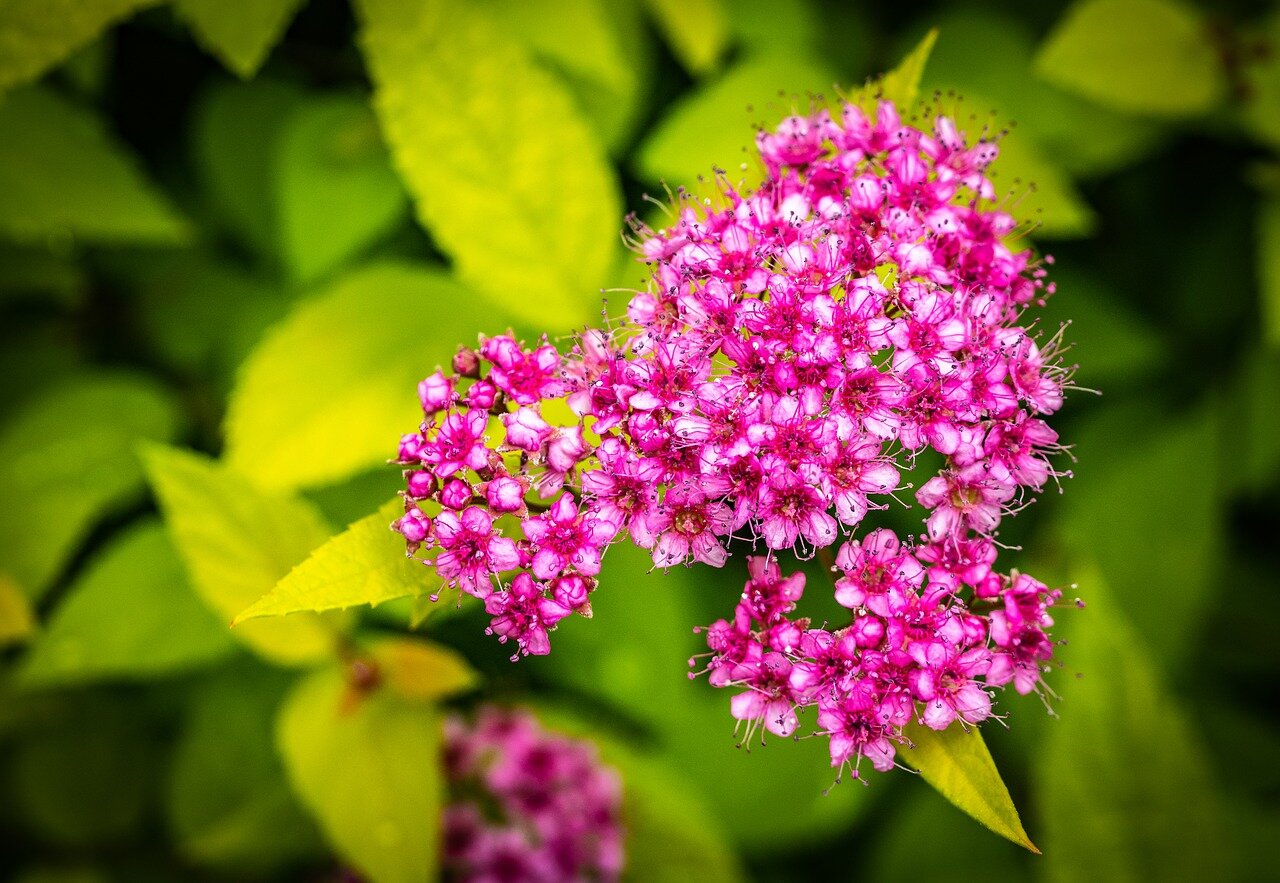Spirea was one of the first shrubs whose name I learned as a child. There was an enormous plant next to our kitchen door. In early spring, it was covered with clusters of white blooms on arching stems. It had almost no scent, but the flowers were impressive although short-lived. When I asked my mother what kind of “bush” it was, she told me (semi-accurately) that it was a Spirea Van Hootie. Now I know that it was a Spirea x vanhouttei. Moving to the front garden, I asked her for the name of a shorter shrub with deep pink blooms.“Spirea,” she responded. “How can this be Spirea if the other one is Spirea,” my six-year-old self inquired, “because they’re not the same color and they’re not the same size and they don’t look alike.” Her response: “Go ask your father.” (A lot of our conversations ended this way.) As an adult, I realize the smaller, pink-flowered cultivar was ‘Anthony Waterer,’ one of the oldest and still one of the most tolerant of heat, poor soil, and bad pruning.
As a genus, Spireas are hardy and long lived. There are numerous species, and new cultivars seem to arrive on market every year. Sizes range from tiny to giant; flower colors can be pink, white, or red, and can occur on branch tips or all along the stems. Old varieties have narrow blue-green leaves that neither impress nor disappoint. Some of the newer cultivars have brightly colored foliage which extends the beauty season beyond the bloom period. In the Mary Snoddy garden, a pair of Spirea japonica ‘Limemound’ throw bright yellow foliage in early spring, which darkens to a lime green when weather turns hot. Limemound has bright pink flowers that scream for attention against the yellow foliage. Viewers either ooh and ahh or walk away muttering something that might be “eyesore.” The Limemound’s foliage turns orange in autumn and then sheds entirely, leaving a winter framework that resembles a jumbled ball of sticks. I underestimated the mature size of these shrubs (three feet with an equal spread), so I am forced to prune hard every winter to keep them within the bounds of available space. This major pruning has no evident impact on the plants’ health.
Among the white-flowered variety, Spirea nipponica ‘Snowmound’ is a 3–5-foot shrub that looks like a fireworks display when in bloom. If you have space, old Van Hootie, Spirea vanhouteii will grow to ten feet tall and twelve feet wide. Nurseries may label the vanhouteii species as “Bridal Veil” or “Bridal Wreath” Spirea, but these terms are also used in marketing Spirea prunifolia and Spirea cantoniensis, similar but smaller in stature.
Spireas bloom heaviest on young stems, so pruning will force new growth and result in more flowers the following year. Pruning should be done as soon as the flowers fade and fall. Cut stems to varying lengths with hand pruners rather than using hedge trimmers to create a round ball. Plants are most attractive when one-third of the oldest branches are cut back hard and the remainder are pruned lightly. This maintains their graceful arching appearance. These shrubs look best when grown in groups or hedges rather than as single specimens. They perform well on slopes where mowing is treacherous.
Spireas tolerate most soil types and will withstand half-day shade, although flowering is better in full sun. Avoid wet sites. Most species are cold hardy zones 5-9 or even colder, but check the plant tag to confirm zone for your selection. They are rarely bothered by diseases, insects, or deer.
Spirea japonica ‘Limemound’ elicits comments that range from “Outstanding” to “Yikes!”
A close view of Spirea cantoniensis ‘Reevesiana’ flowers
A young planting of Spirea cantoniensis ‘Reevesiana,’ perfectly sited at the top of a steep bank near a creek.


